
How to Use GUVA-S12SD: Examples, Pinouts, and Specs
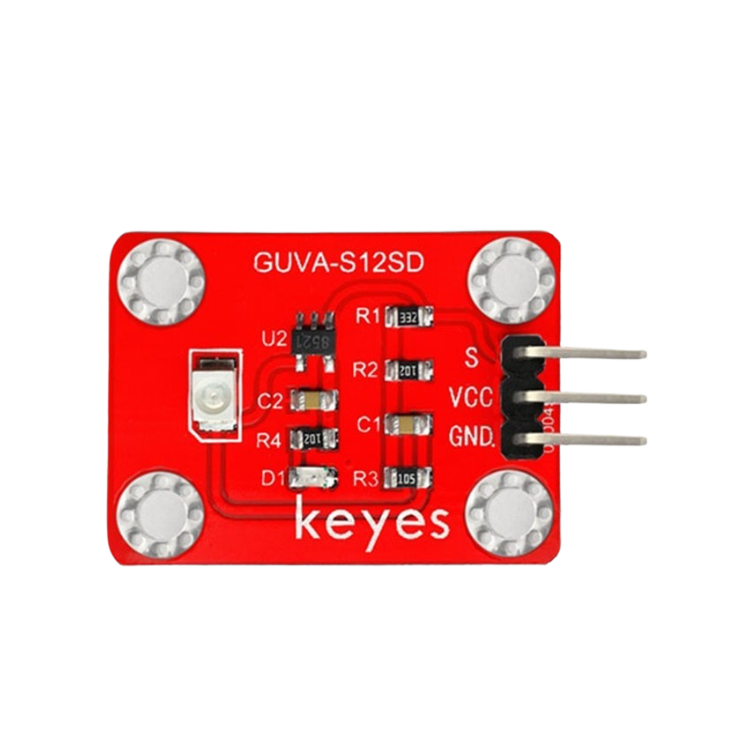
 Design with GUVA-S12SD in Cirkit Designer
Design with GUVA-S12SD in Cirkit DesignerIntroduction
The GUVA-S12SD is a UV light sensor manufactured by KEYES, with the part ID "UNO". This sensor is designed to detect ultraviolet (UV) radiation in the wavelength range of 240 to 370 nm. It outputs an analog voltage proportional to the intensity of UV light, making it an ideal choice for applications requiring UV monitoring.
Explore Projects Built with GUVA-S12SD
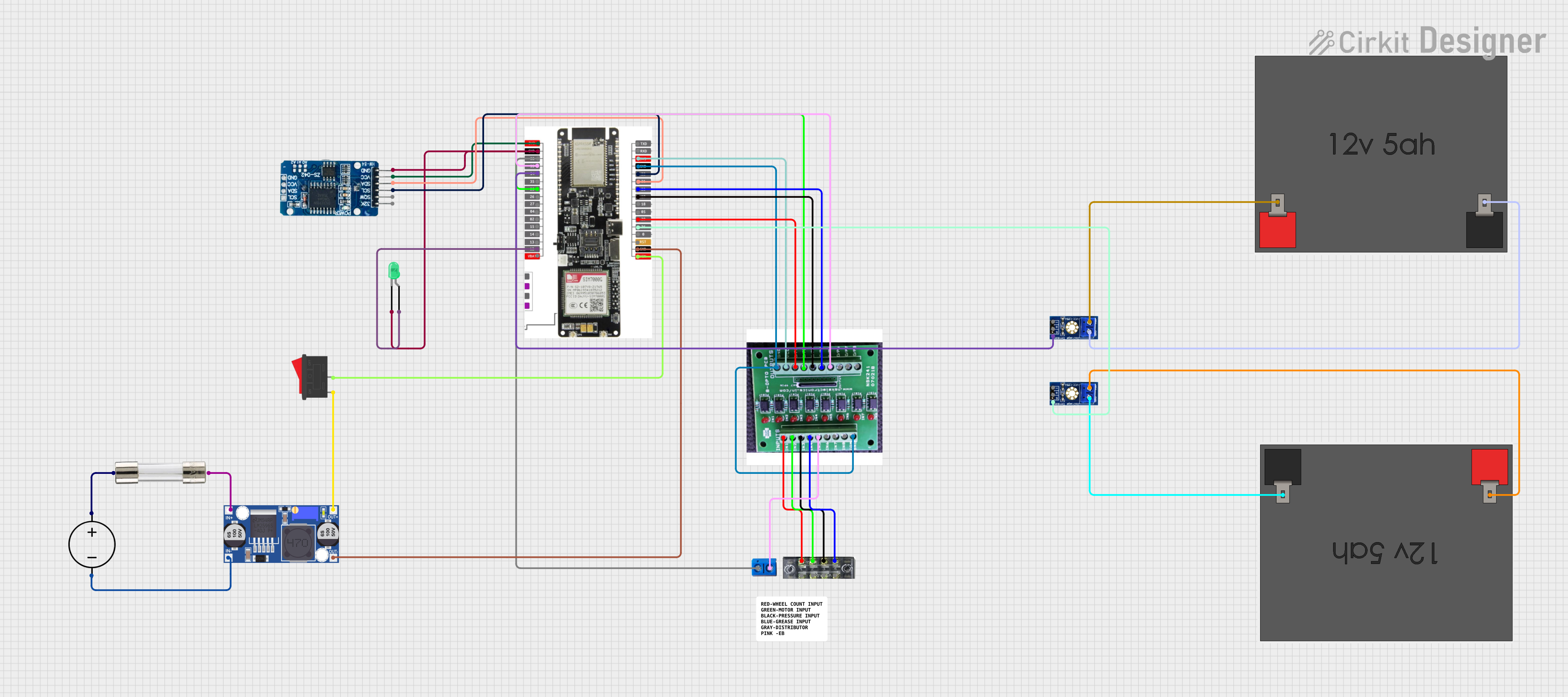
 Open Project in Cirkit Designer
Open Project in Cirkit Designer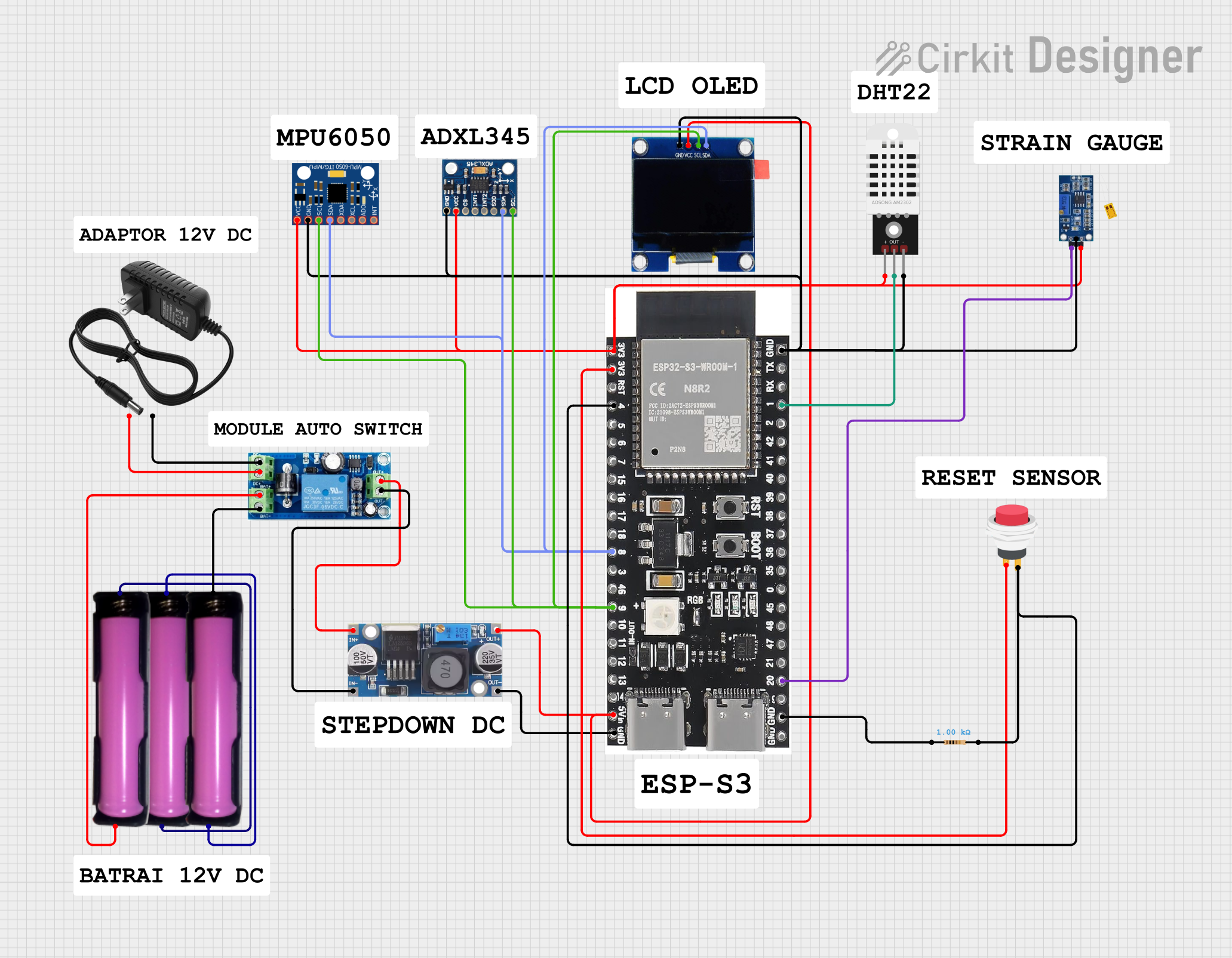
 Open Project in Cirkit Designer
Open Project in Cirkit Designer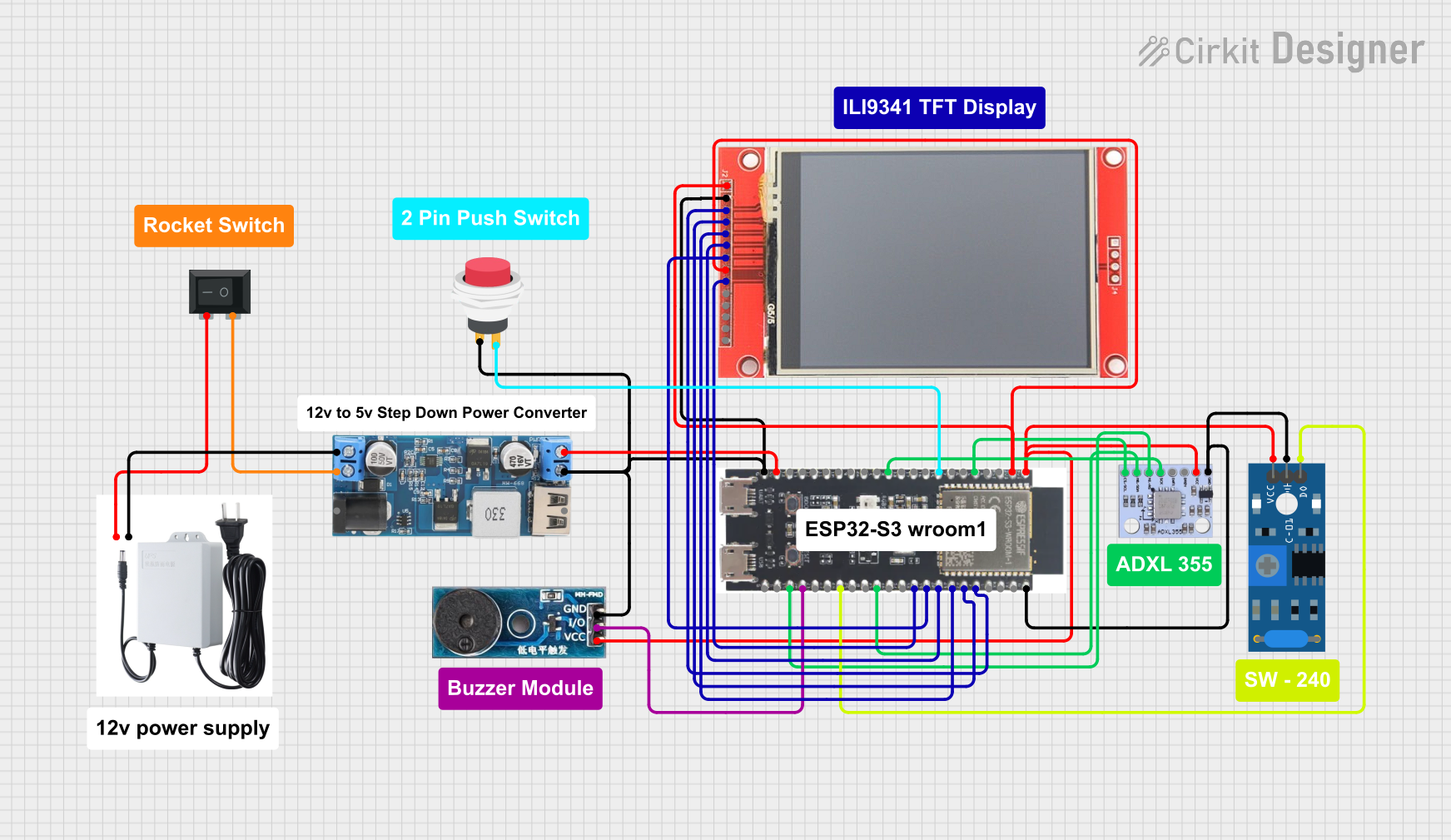
 Open Project in Cirkit Designer
Open Project in Cirkit Designer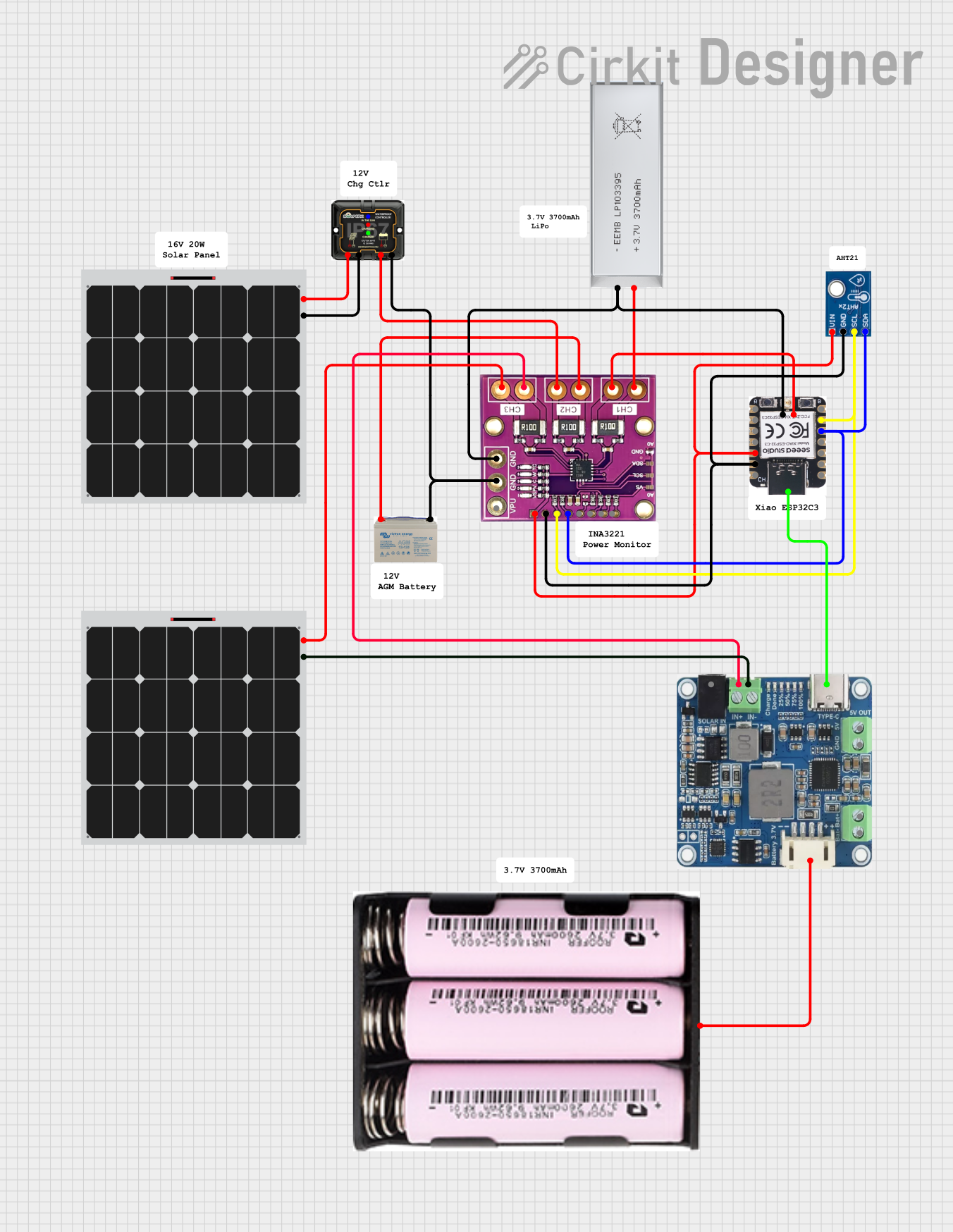
 Open Project in Cirkit Designer
Open Project in Cirkit DesignerExplore Projects Built with GUVA-S12SD

 Open Project in Cirkit Designer
Open Project in Cirkit Designer
 Open Project in Cirkit Designer
Open Project in Cirkit Designer
 Open Project in Cirkit Designer
Open Project in Cirkit Designer
 Open Project in Cirkit Designer
Open Project in Cirkit DesignerCommon Applications:
- UV index measurement for environmental monitoring
- Sun exposure tracking for health and safety
- UV light detection in sterilization systems
- Monitoring UV levels in industrial and agricultural settings
Technical Specifications
The GUVA-S12SD UV sensor is a compact and efficient device with the following key specifications:
| Parameter | Value |
|---|---|
| Operating Voltage | 3.3V to 5V |
| Operating Current | 0.06 mA (typical) |
| Wavelength Range | 240 nm to 370 nm |
| Output Voltage Range | 0V to Vcc (proportional to UV intensity) |
| Operating Temperature | -30°C to +85°C |
| Dimensions | 20 mm x 10 mm x 2 mm |
Pin Configuration
The GUVA-S12SD sensor has three pins, as described in the table below:
| Pin | Name | Description |
|---|---|---|
| 1 | VCC | Power supply input (3.3V to 5V) |
| 2 | GND | Ground connection |
| 3 | OUT | Analog output voltage proportional to UV intensity |
Usage Instructions
Connecting the GUVA-S12SD to a Circuit
- Power Supply: Connect the VCC pin to a 3.3V or 5V power source, depending on your system's voltage level.
- Ground: Connect the GND pin to the ground of your circuit.
- Output: Connect the OUT pin to an analog input pin of your microcontroller or ADC (Analog-to-Digital Converter) to read the UV intensity.
Important Considerations:
- Ensure the sensor is not exposed to excessive heat or humidity, as this may affect its performance.
- Avoid placing the sensor in direct contact with water or other liquids.
- Use a stable power supply to minimize noise in the analog output signal.
- The sensor's output voltage is proportional to UV intensity, so calibration may be required for precise measurements.
Example: Using GUVA-S12SD with Arduino UNO
The following example demonstrates how to connect and read data from the GUVA-S12SD sensor using an Arduino UNO:
Circuit Diagram:
- Connect the VCC pin of the sensor to the 5V pin on the Arduino.
- Connect the GND pin of the sensor to the GND pin on the Arduino.
- Connect the OUT pin of the sensor to the A0 analog input pin on the Arduino.
Arduino Code:
// GUVA-S12SD UV Sensor Example with Arduino UNO
// Reads the analog output from the sensor and calculates UV intensity.
const int uvSensorPin = A0; // Analog pin connected to the sensor's OUT pin
float uvVoltage = 0.0; // Variable to store the sensor's output voltage
float uvIntensity = 0.0; // Variable to store the calculated UV intensity
void setup() {
Serial.begin(9600); // Initialize serial communication at 9600 baud
pinMode(uvSensorPin, INPUT); // Set the sensor pin as input
}
void loop() {
int sensorValue = analogRead(uvSensorPin); // Read the analog value
uvVoltage = sensorValue * (5.0 / 1023.0); // Convert to voltage (5V reference)
// Convert voltage to UV intensity (example conversion factor: 307)
// Note: The conversion factor depends on the sensor's calibration.
uvIntensity = uvVoltage * 307.0;
// Print the results to the Serial Monitor
Serial.print("UV Voltage: ");
Serial.print(uvVoltage);
Serial.print(" V, UV Intensity: ");
Serial.print(uvIntensity);
Serial.println(" mW/m^2");
delay(1000); // Wait for 1 second before the next reading
}
Notes:
- The conversion factor (307 in the example) is an approximate value. For accurate results, calibrate the sensor using a known UV light source.
- The output voltage is directly proportional to UV intensity, so higher UV levels will result in higher output voltages.
Troubleshooting and FAQs
Common Issues and Solutions:
No Output Voltage:
- Ensure the sensor is properly connected to the power supply and ground.
- Verify that the input voltage is within the specified range (3.3V to 5V).
Inconsistent Readings:
- Check for electrical noise or unstable power supply.
- Ensure the sensor is not exposed to sudden changes in temperature or humidity.
Low Sensitivity:
- Verify that the UV light source is within the sensor's wavelength range (240-370 nm).
- Clean the sensor surface to remove any dust or debris that may block UV light.
FAQs:
Q: Can the GUVA-S12SD detect visible light?
A: No, the GUVA-S12SD is specifically designed to detect UV light in the 240-370 nm range. It is not sensitive to visible light.
Q: How do I calibrate the sensor?
A: To calibrate the sensor, expose it to a known UV light source with a specific intensity. Measure the output voltage and calculate the conversion factor to relate voltage to UV intensity.
Q: Can I use the sensor outdoors?
A: Yes, the sensor can be used outdoors, but it should be protected from water and extreme environmental conditions to ensure reliable operation.
Q: What is the maximum UV intensity the sensor can measure?
A: The maximum measurable UV intensity depends on the sensor's output voltage range and the calibration factor. Typically, the sensor can measure UV intensities up to several hundred mW/m².